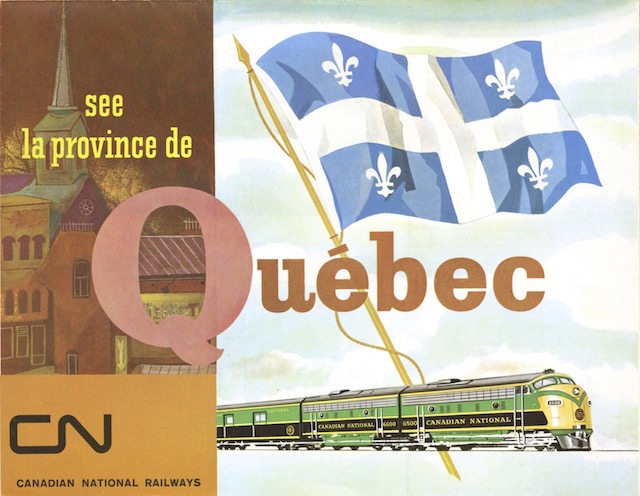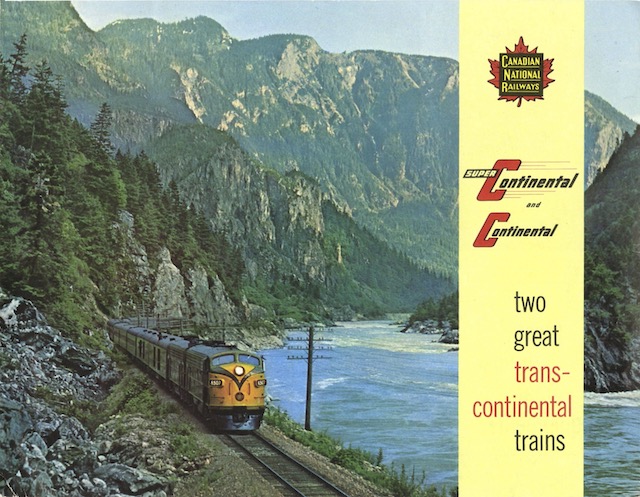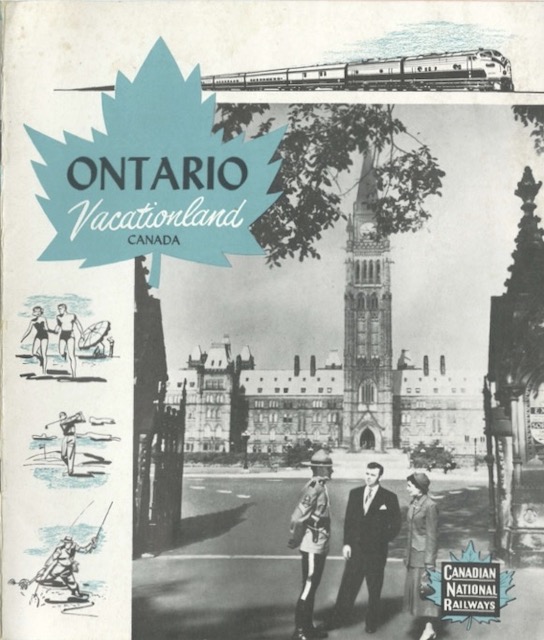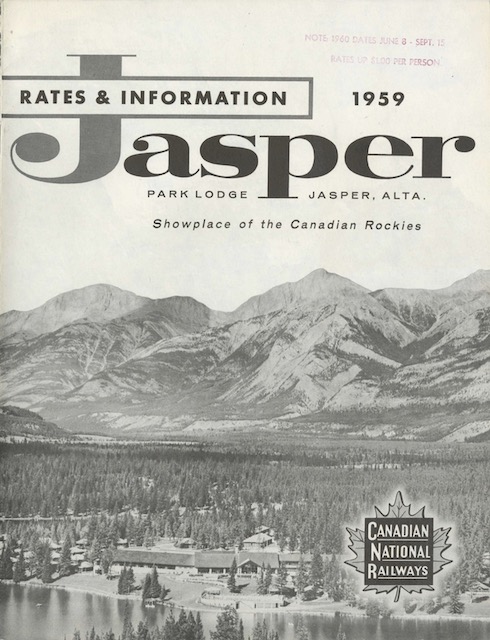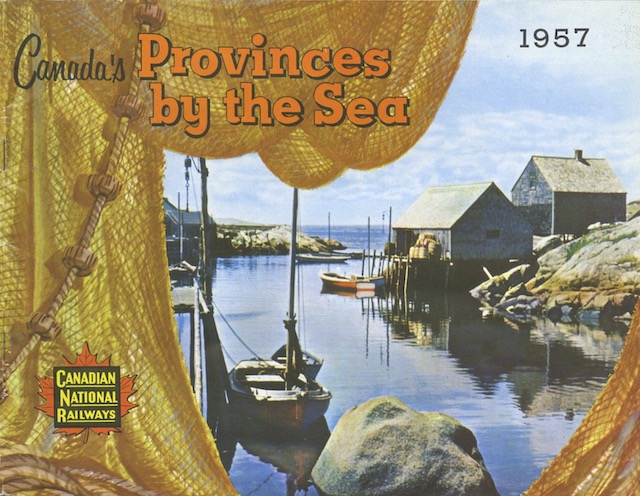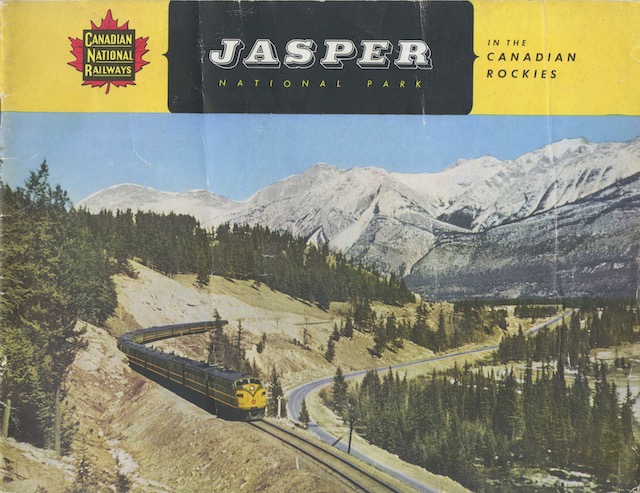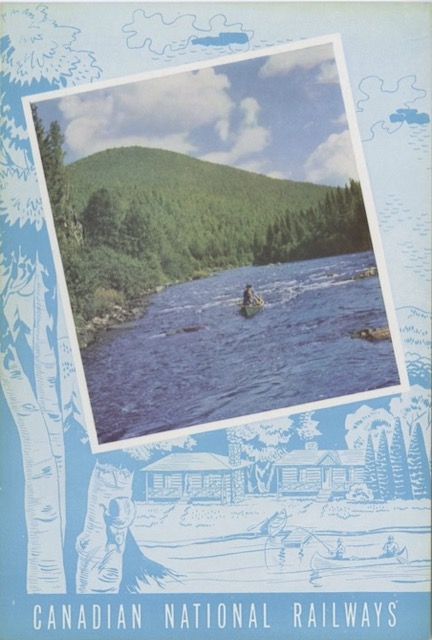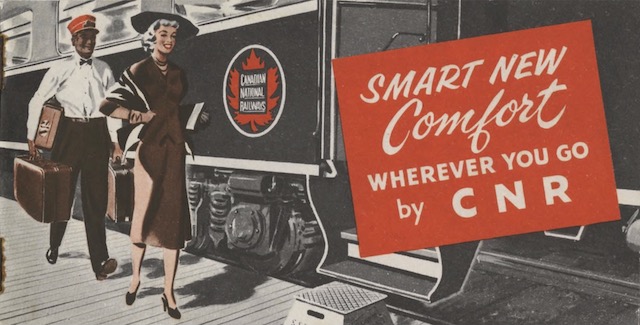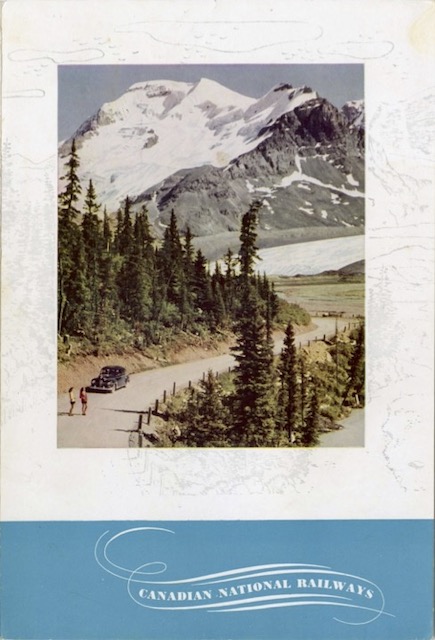Here’s a Canadian National menu we haven’t seen before and one we have, both of which were used on a steamship to Alaska in June, 1961. The first menu shows the S.S. Prince George leaving the city of Vancouver on its way north to Skagway. The back shows people camping in a sloppily pitched tent in Jasper National Park.
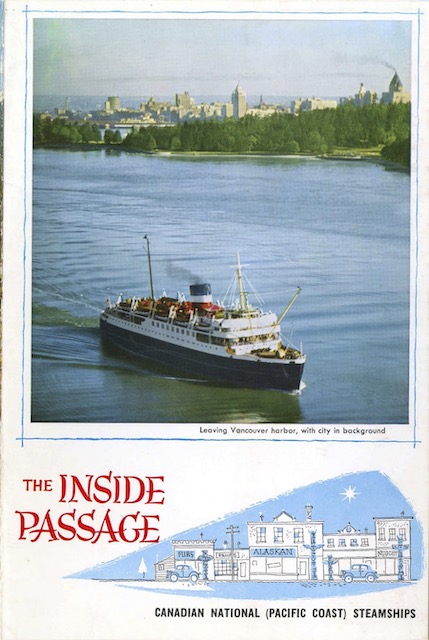 Click image to download a 800-KB PDF of this menu.
Click image to download a 800-KB PDF of this menu.
Dated June 29, the inside describes the six-course menus typical of CN Alaska steamships: appetizer, soup, fish, meat and vegetables, dessert, and cheese. Entrées include a mushroom omelette, curried chicken, ham, prime rib, turkey, or a cold meat buffet. There was only one fish option, poached filet of cod. Continue reading

